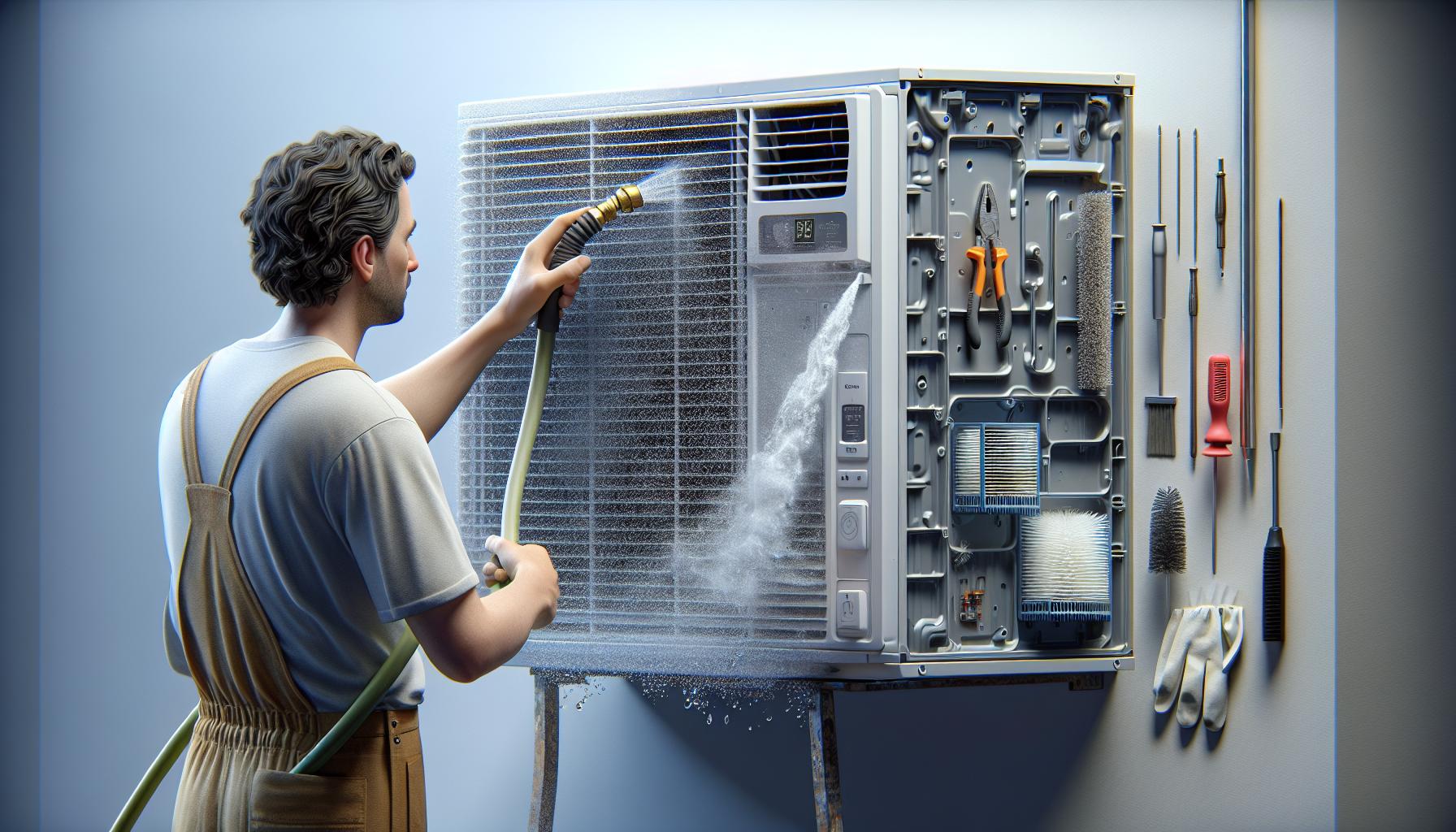When your Rheem water heater’s red light starts flashing seven times, it’s signalling a specific fault that needs your attention. This error code is more than just a random series of blinks; it’s your heater’s way of telling you there’s a problem with the gas valve circuit. Understanding what your appliance is trying to communicate is key to a quick and effective fix.
In this article, you’ll discover the reasons behind the seven red flashes and what they mean for the performance of your water heater. You’ll also learn the steps to troubleshoot and resolve the issue, ensuring you’re never left in the cold. Stay informed and keep your water heater running smoothly by getting to grips with these essential maintenance insights.
What Does the Red Light Flashing 7 Times Mean?
When you see the red light on your Rheem water heater flashing 7 times, it’s a warning sign. This specific error code is the heater’s way of telling you there’s a Gas Control or Valve Failure. When the gas control valve fails, it means the unit is having trouble with the flow of gas, or the valve is not opening properly. This is critical for the correct functioning of your heater as it is this valve that delivers gas to the burner to maintain water temperature.
Understanding the Red Light Sequence
- The light flashes in a sequence that corresponds to a specific error code
- The code is a diagnostic tool to identify and troubleshoot issues
Possible Issues Indicated by 7 Flashes
- Faulty gas valve
- Failed control board
- Bad wiring or connections
Recognizing that each flash is a call to action is crucial for maintaining your water heater’s longevity and performance. The gas valve is the engine behind your water heater’s heating ability, and without proper functioning, your unit may not provide hot water when you need it.
Regular maintenance and quick response to error codes like this not only keep your water heater in optimal condition but also ensure the safety of your household. Gas issues, if not addressed promptly, carry risks beyond inconvenient cold showers—they can be hazardous to your health and safety.
Understanding the Gas Valve Circuit
Your understanding of the gas valve circuit in your Rheem water heater is crucial when confronted with the seven red flashes signaling a fault. This circuit is the primary pathway through which your water heater controls gas flow, ensuring that heat is generated safely and efficiently.
The gas valve itself serves as the gatekeeper for gas entering the burner, while the control board regulates the valve’s operation based on the information from sensors and thermostats. A breakdown in this coordination can result in a disruption of service, indicated by the red light flashes.
Key components to pay attention to within the gas valve circuit include:
- Thermopile: Generates electricity to open the gas valve
- Thermostat: Monitors water temperature and controls gas flow
- Solenoid Valves: Open and close to regulate gas flow to the burner
- Wiring Connections: Provide pathways for electrical signals
A failure in the gas valve circuit often stems from:
- Faulty thermopiles unable to generate enough voltage
- A malfunctioning thermostat leading to incorrect readings
- Solenoid valves that have become stuck or inoperative
- Loose or damaged wiring hindering electrical signal transmission
When any of these elements are not functioning as they should, the Rheem water heater’s system recognises an anomaly and prevents the unit from operating, as a safety precaution, hence the flashing red light.
Inspecting and testing these components requires technical knowledge and tools like multimeters. It’s strongly advisable to employ a certified technician to handle this examination, as DIY fixes on gas appliances can lead to hazardous situations or void warranty.
Regular maintenance of your water heater can prevent unexpected breakdowns and prolong the lifespan of the gas valve circuit. Ensure professional servicing is conducted annually to keep your Rheem water heater in optimal condition.
Possible Reasons for the Flashing Red Light
When faced with a Rheem water heater that’s signaling a fault via seven red flashes, you’re witnessing a specific error code for your unit. This code indicates a Flammable Vapor Sensor (FVS) lockout, which means your heater has detected the presence of flammable vapors in its vicinity. It’s crucial to understand the potential triggers behind this safety mechanism to address the issue effectively.
- Flammable Vapors Near the Unit: If you store items like gasoline or paint thinner near the water heater, these can emit vapors that the FVS will detect, causing it to lock out.
- Sensor Failure: Over time, the FVS itself can malfunction, falsely detecting flammable vapors even when none are present.
- Excessive Moisture: High humidity or water spills around the heater can affect the sensor’s ability to function properly.
Troubleshooting: To rectify this situation, you’ll want to remove any flammable materials from around the water heater and ensure the area is well-ventilated. If the problem persists, it’s likely you’re dealing with a sensor issue. In such cases, resetting the water heater may temporarily clear the error, but it’s advisable to replace a faulty FVS to prevent future occurrences.
Understanding the FVS is just one part of the diagnostic process. Other reasons your Rheem water heater flashes might be electrical in nature or due to disruptions in the gas supply, which can be influenced by several factors:
- Electrical Interference: Power surges or grounding issues can cause erratic behavior in electronic components.
- Gas Pressure Irregularities: Incorrect gas pressure can lead to insufficient fuel reaching the burner assembly.
For electrical or gas supply problems, professional assistance is necessary to ensure your safety and the ongoing functionality of your water heater. Regular maintenance checks can often preempt these issues by keeping connections secure and the system calibrated.
Troubleshooting the Issue
When your Rheem water heater’s red light flashes 7 times, it’s sending you a critical message: the Flammable Vapor Sensor has detected an issue. Immediate action is required to address this and prevent further damage to your system.
Step 1: Clear the Area
Start by:
- Removing any flammable material from the vicinity of the heater.
- Ensuring there’s adequate ventilation to clear any vapours.
Step 2: Dry the Sensor
If moisture’s the culprit:
- Wipe down the FVS to remove any condensation.
- Use a fan or a hairdryer on a low setting to help dry out the area.
Step 3: Check for Electrical Interference
Electrical appliances can sometimes interfere with your water heater’s operation. To combat this:
- Unplug devices near your water heater.
- Check that the unit is on a dedicated circuit to minimize electrical noise.
Step 4: Inspect the Gas Pressure
Gas pressure issues require an experienced touch. Professional diagnosis ensures correct measurement:
- Schedule a service with a certified technician to review gas pressures.
- Regular maintenance checks prevent future gas-related errors.
Step 5: Reset or Replace the FVS
If you’ve undertaken the prior steps without success:
- Try a system reset as per your heater’s instruction manual.
- If resetting doesn’t do the trick, the FVS may need replacing.
Remember, while these steps can be undertaken by informed homeowners, when in doubt, it’s always safer to engage a licensed professional. Regular checks and prompt action at the first sign of trouble maintain your water heater’s performance and lifespan.
Resolving the Problem
When faced with a seven-time flashing red light on your Rheem water heater, it’s crucial to take definitive steps towards resolution to restore your system to full functionality. Immediate actions are necessary to prevent the issue from escalating.
Firstly, ensure you’ve addressed potential flammable vapor accumulations. This might involve ventilating the area or removing substances that could emit flammable fumes. If the vapor sensor has detected such vapors, it won’t allow the heater to operate as a safety precaution.
Secondly, inspect and service the Flammable Vapor Sensor itself. Often, the solution is as straightforward as cleaning the sensor. Dust, debris, or other contaminants can cause the sensor to trip falsely. Gently wiping the sensor with a clean, dry cloth can sometimes rectify this scenario.
In cases where moisture is the culprit, you’ll need to dry the sensor thoroughly. However, if electrical interference was the root cause, rerouting wires or moving external appliances away from the sensor area could resolve the problem.
For more persistent issues, you should consider sensor replacement. If the FVS continually fails at detecting conditions correctly or resets no longer work, it’s time to replace the sensor.
Remember, working on gas appliances involves risks. If you’re not comfortable performing these tasks yourself, or if the problem persists, contacting a certified professional is always the safest approach. They can conduct an in-depth inspection and take appropriate corrective measures. Certified technicians can also verify gas pressure, ensuring it is within safe operating parameters, which is something you should not attempt on your own.
Conclusion
Remember your Rheem water heater flashing a red light seven times signals an issue with the Flammable Vapor Sensor. You’ve learned how to troubleshoot this by checking for vapors, cleaning or drying the sensor, and addressing electrical interference. If these steps don’t clear up the problem, sensor replacement might be the next course of action. Don’t hesitate to call in a certified professional, especially when it comes to verifying gas pressure or undertaking complex repairs. They’ll ensure your water heater gets back to working order safely and efficiently.
Related Posts:
- Fix Rheem Heater: Blue Light Flashing 7 Times…
- Honeywell Heater Alert: Fix the 7-Blink Light Code
- Decode Richmond Water Heater Blinking Light Codes:…
- Honeywell Heater Blink Codes: Solve Status Light Issues
- Pentair MasterTemp 400: Fix a Flashing Heating Light…
- Fix Rinnai Heater Red Light: Causes & Solutions



